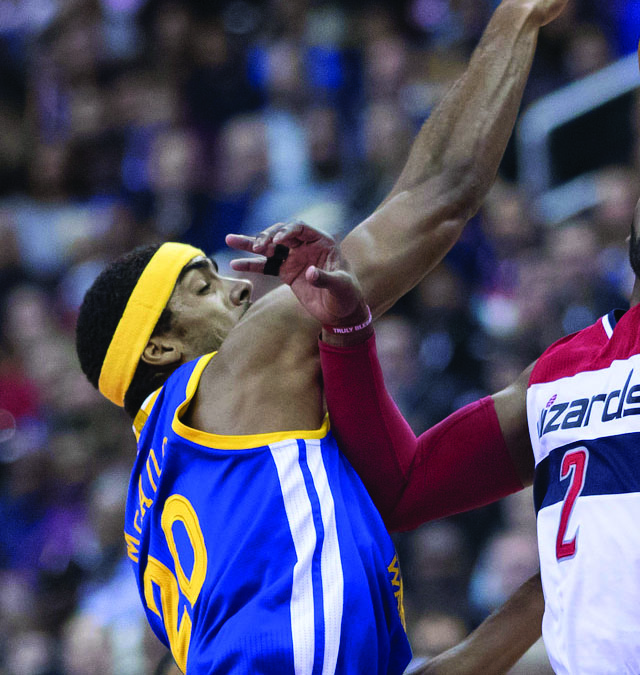
From the soccer fields of AYSO, to the Little League baseball diamond, ask anyone in a uniform what they want to be doing in 20 years, and many will give you the same answer: “I want to be a professional athlete.” Taking the mound under the bright lights of Yankee Stadium, hearing the roar of the Warriors faithful chanting your name, scoring a touchdown in front of 80 thousand fans — it’s the fantasy that occupies the first phase of life for all athletes.
While the odds of making it to the highest level of competition are incredibly slim, there are those who are lucky enough to make it. However, life as a professional athlete includes many characteristics that remain unappreciated.
The moment a rookie enters a professional league, he falls down the totem pole of superiority. Most professional athletes are the “stars” of their high school or college teams, but this status changes as they enter an increased level of competition.
Golden State Warriors forward James Michael-McAdoo recalls the difficulty of the transition from college to the National Basketball Association: “It was very difficult. Going from [the University of North Carolina], one of, if not the top, college basketball programs in the country, to being undrafted was definitely a reality check … It was one of the toughest obstacles I’ve had to overcome.”
However, even getting drafted or signed by a team hardly guarantees a player a role on the team.
“Every player who gets drafted has something to offer to a major league team,” a Miami Marlins scouting director told Oakland Athletics outfilder Jake Smolinski, when he was still in the minor leagues. “Now, whether or not things pan out and opportunities arise, they stay healthy, there’s so many factors that go into whether, number one, somebody makes it to the Major Leagues, and number two, whether they can stay there and be productive in the long haul.”
Another common struggle endured by professional athletes is the extensive periods of time spent away from home. For example, in Major League Baseball, Spring Training begins in February, and the season could span as late as November, giving players only a couple months of off-time.
“Mostly nobody ever plays in the city they grew up in,” says Smolinski. “It’s a different lifestyle. You have to learn how to live out of a suitcase.”
While players often rent or buy houses in the cities of their teams, they are still on the road for at least half of the season, limiting the time they spend with family and friends.
“It does get difficult only seeing my family once or twice a year during the season,” admitted Michael-McAdoo. “My labrador retrievers obviously don’t miss me much until I get home, and [then they] attack me, mainly with licking me.”
While on the road, life as a professional athlete isn’t always as glamorous as some assume it to be.
“[In the minor leagues], we had the long bus drives, the travel that wasn’t so well, the hotels that weren’t so great, and the food that wasn’t so great,” explains Smolinski.
However, life as a professional athlete is filled with benefits and opportunities waiting to be taken advantage of. While professional athletes have long been admired, with today’s media and the speed with which news can spread, they have a platform unlike that of most other professions.
“I take extreme pride in the position I hold as an NBA player and the responsibility to be a role model and use my platform to impact the world for good … I’ve done everything from beach cleanups to a shoe design competition with Vans, where all proceeds went to the Boys and Girls Clubs of Oakland.
Although the stress, doubt and public pressure can oftentimes be difficult to handle, Smolinski makes sure to keep everything in perspective: “You’re getting paid to play a game … Your’re living out your dream as a young kid, and you’re an adult … It’s still that same game.”






